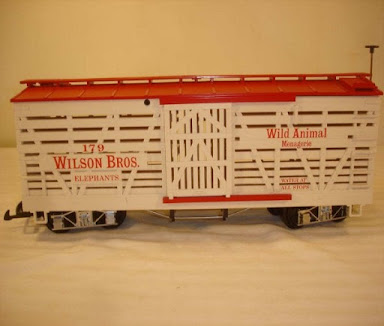 |
Worn-out Buehler LGB engine motors
|
LGB uses Buehler motors in their locomotives and engine. Buehler motors are designed to work flawlessly in LGB engines and have an average lifespan of 800 - 1200 hours of loco runtime.
Depending on the type of the LGB loco the transmission of power works in two ways:
Either as direct transmission from the worm gear to a plastic gear wheel which is located on the axle of an engine e.g. Stainz.
Or: from the worm gear via an idler gear onto the gear wheel on the axle e.g. Mogul
Wear and Tear - Damage
Years of operation affect mainly the gear wheel- connected directly to the worm drive- wearing it out. Damage may also occur due to mechanical stress or load e.g. the train is running unmonitored, derails partly and gets stuck somewhere along the track and keeps running in that stuck condition.
Or, your 2-year old son or grandson grabs the locomotive in full motion. This delivers too much power to the gear wheel as the gear wheel is forcibly stopped and the motor tries to keep running due to the electrical power supplied to the motor and the inertia of the motor. So the teeth on the gear wheel partly break off. This leads to an uneven and un-synchronized movement of the two powered axles of the locomotive. In engines with connecting rods this will lead eventually to a blockage of the drive train.
Sometimes people notice that the loco runs significantly slower than usual with a decreased pulling power. Or the engine stops frequently. In this case the motor itself is giving up and pulling excessive amperage. In case the user is operating with a starter kit transformer this transformer will reach the end of its performance and shut down for cooling. When a motor is giving up it regularly transforms the energy supplied into heat which will be transported via the motor axle to the worm drive. The heated worm drive will eventually destroy/melt the gear wheel connected to it. That ends the transmission of power. And the motor stops running.
The very early design of the Buehler motor provided exchangeable carbon brushes. One could visually check on the wear of those brushes by how far they were worn out. The later design is fully enclosed and therefor it is impossible to check on the wear. Buehler found out that when the brushes are worn out so are the bearings. So basically it did not make any sense to exchange the brushes. Nowadays the whole motor is being exchanged.
Motor Exchanges |
Brand new LGB Buehler motors. Top: long shaft motor. Bottom: short shaft motor
|
TrainCraft by Klaus carries all required LGB types of Buehler motors. Klaus exchanges/ installs them in ALL types of LGB engines.
Make sure to use proper tools and fitting screwdrivers. The tiny LGB screws are easily damaged when operated with general household tools. Be sure to use the correct gear wheels depending on your loco type. LGB uses more than 9 different gear wheels. Some may look similar but beware of the thread and spacing.
Caution
The first generation motorblock was made of two shells (left hand, right hand) which are very difficult to service. You will find them in the early Stainz locomotives , the 2080's Tank Steam loco (Brockenbahn) and the Crocodile (LGB 2040).
DIY on first generation LGB locos ...
First you have to remove all connecting rods to free the wheels. Then you have to carefully remove the wheels and watch the spring loaded carbon brushes (the old type) which consist of a separate spring and carbon brush. If you're not careful the spring with the carbon brush would jump off and away.
After all the wheels on that side of the motorblock which shows the screw heads have been removed you can unscrew these screws and pull the two shells apart. TIP: put all screws in a bin or saucer to avoid loosing any.

When removing the motor one has to watch two tiny steel balls at the end of the motor axles. The early Buehler motors did not have thrust-bearings so these steel balls were necessary to keep the motor axles from moving sideways.
Installing the new motor
Make sure to have those steel balls reinstalled with a new motor unless you install a later generation Buehler motor which has load bearings.
Now comes the tricky part:
When re-inserting the motor you need to make sure that both loco axles are synchronized in their position. If you don't do it now you will not be able to correct this mistake once the motor block is re-assembled. The end of the loco axles provide two beveled portions which position the wheels. The synchronization can be easily achieved visually by assuring the parallel position of the bevels of both axles.
Be careful when reinstalling the wheels because the spring loaded carbon brushes have to come in first.
Best Bet: call Klaus and have him install your new motor along with all added/ required parts
Fun Fact: Buehler started in 1855 as a clock manufacturer in the Black Forest region of Germany. In 1892 the great grandfather of the current owners bought the company and added drive engineering to the production line. He kept the name Buehler for the factory and product lines. By 1955 the factory was moved to Nuremberg and the first electric motor was manufactured. Buehler grew from a small business manufacturer to a worldwide company with 1600 employees worldwide, manufacturing in 5 countries (USA, China, Germany, Check Republic, Mexico) and for the automotive, space, industrial and aviation industry.




































